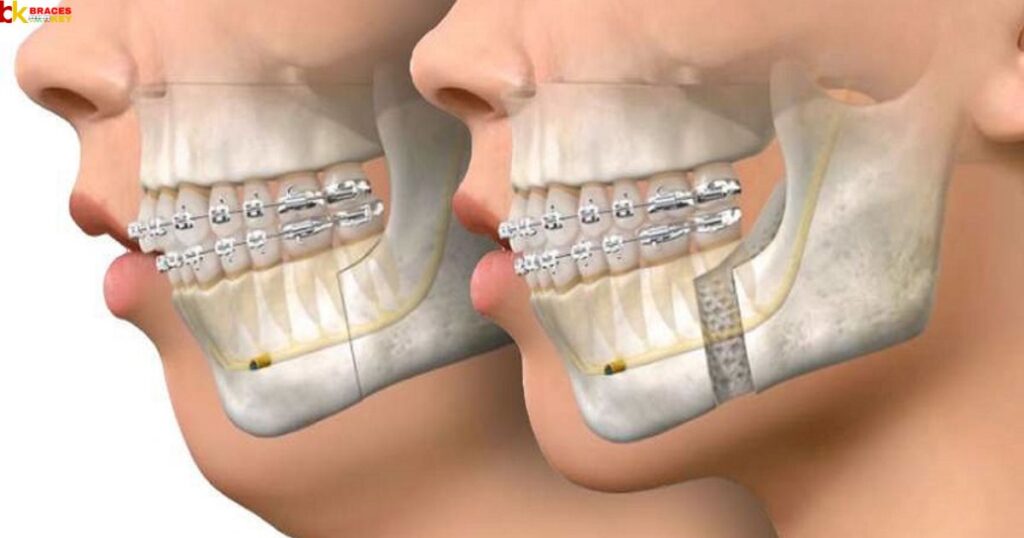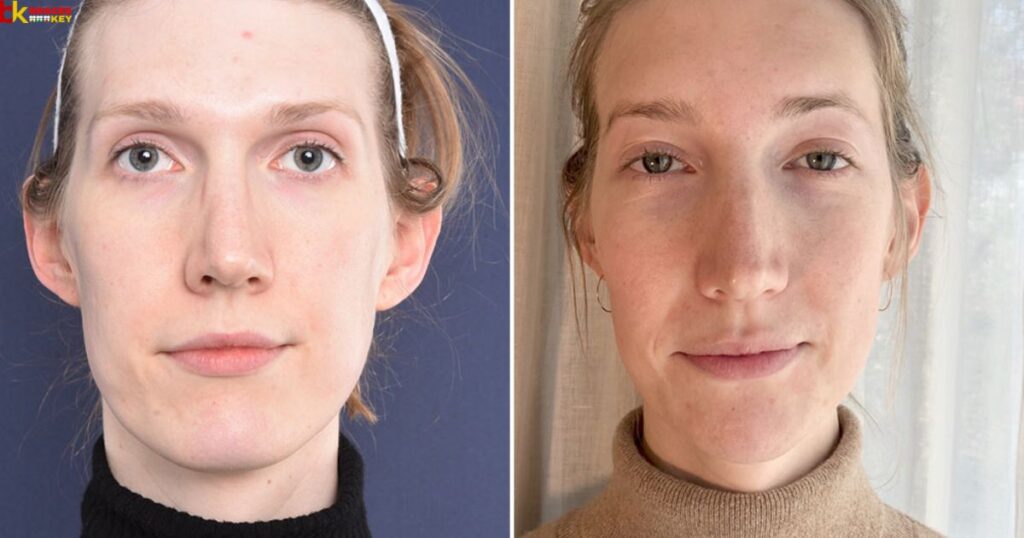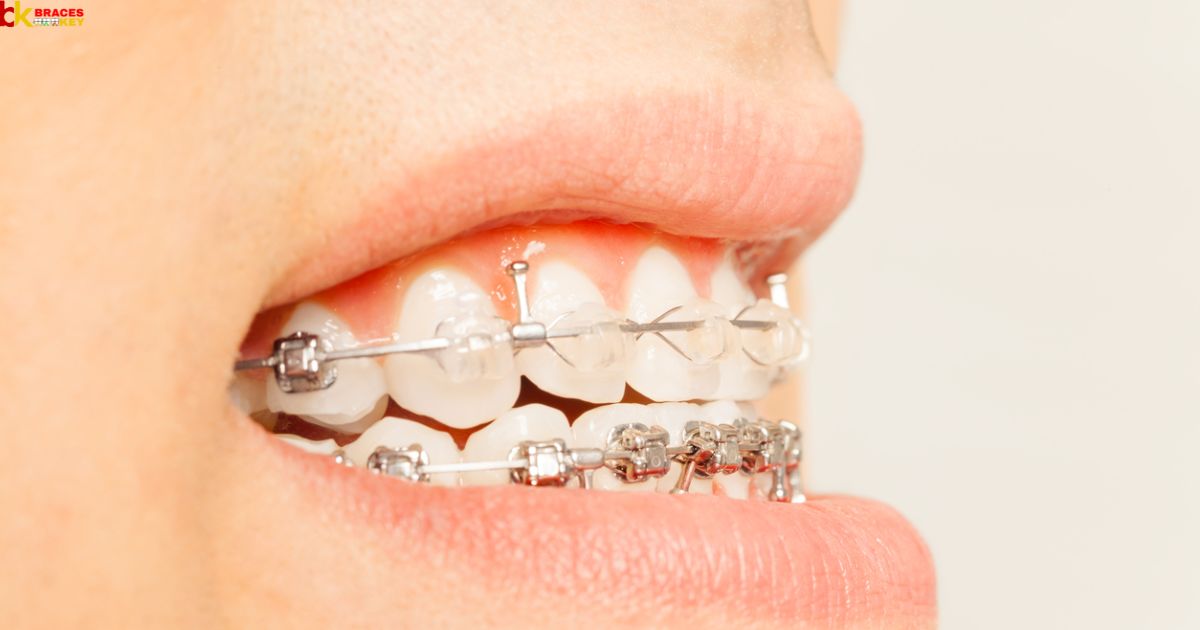Braces have long been recognized as an effective tool for correcting dental misalignments, but can they also expand the lower jaw? This is a common question among individuals seeking orthodontic treatment. In this article, we delve into the science behind jaw expansion with braces, exploring the techniques used, potential benefits, and factors to consider before opting for this procedure. We also examine the duration of treatment and potential side effects. Additionally, we provide real-life case studies and expert advice from orthodontists to offer a comprehensive understanding of the topic. Whether you are considering braces for yourself or a loved one, this article aims to provide valuable insights into the possibility of expanding the lower jaw using this orthodontic treatment.
Key Takeaways
- Techniques such as expanders and appliances can be used to widen the lower jaw with braces.
- Jaw expansion with braces can improve dental and facial aesthetics, jaw alignment and function, and correct bite issues.
- Factors to consider before opting for jaw expansion with braces include age, dental and skeletal alignment, facial profile, and patient compliance.
- The duration of jaw expansion with braces can vary, and regular adjustments and check-ups with an orthodontist are necessary.
The Science Behind Jaw Expansion With Braces

The science behind jaw expansion with braces involves the controlled application of orthodontic forces to gradually widen the lower jaw. Orthodontists use various techniques to achieve this, such as using expanders or appliances that exert pressure on the jawbone. These appliances are custom-made to fit each individual’s mouth and are adjusted periodically to ensure optimal results.
The process of jaw expansion with braces begins with a thorough evaluation of the patient’s dental and facial structure. X-rays and other diagnostic tools are used to assess the current position of the jaw and determine the necessary treatment plan. Once the braces are applied, the orthodontist will monitor the progress regularly and make adjustments as needed.
Jaw expansion not only helps create a more balanced facial profile but also allows for proper alignment of the teeth. This can improve bite function, reduce the risk of dental problems, and enhance overall oral health. It is important to note that jaw expansion with braces is a gradual process that requires patience and commitment to achieve the desired results.
Common Techniques Used to Expand the Lower Jaw
Commonly, orthodontists frequently employ various techniques to expand the lower jaw using braces. These techniques are aimed at correcting jaw misalignment and improving overall facial harmony. The following table outlines some common techniques used in lower jaw expansion:
| Technique | Description |
|---|---|
| Rapid Palatal Expander (RPE) | This appliance is used to widen the upper jaw, which indirectly helps expand the lower jaw as well. It applies gentle pressure to the palate, gradually widening the arch and creating space for the lower jaw to align properly. |
| Herbst Appliance | This fixed appliance is used to stimulate the growth of the lower jaw. It consists of metal rods and tubes that connect the upper and lower jaws, helping to advance the lower jaw into a more favorable position. |
| Twin Block Appliance | This removable appliance guides the lower jaw forward to correct its position. It consists of two separate blocks that fit together, encouraging the lower jaw to grow in a more forward direction. |
| Forsus Appliance | This fixed appliance is used to correct excessive overbite and encourage lower jaw growth. It consists of springs that connect the upper and lower jaw braces, applying a gentle force to move the lower jaw forward. |
| Lower Lingual Arch | This wire-based appliance is attached to the lower molars to maintain the arch width and prevent the lower jaw from shifting backward. It is often used in conjunction with other techniques to support proper jaw alignment. |
These techniques, when used in combination with braces, can effectively expand the lower jaw and improve dental and facial aesthetics. Orthodontists carefully evaluate each patient’s specific needs and develop a treatment plan tailored to achieve the desired results. It is important to consult with a qualified orthodontist to determine the most suitable technique for individual cases.
Potential Benefits of Jaw Expansion With Braces
Potential Benefits of Jaw Expansion With Braces include improved dental and facial aesthetics and enhanced overall jaw alignment and function. By expanding the lower jaw with braces, individuals can achieve a more harmonious facial profile and a balanced smile. This aesthetic improvement can boost self-confidence and improve overall quality of life. In addition, jaw expansion can help correct bite issues such as crossbites, overcrowding, and misalignments.
This can lead to improved chewing and speaking abilities, as well as reduced risk of dental problems such as tooth decay and gum disease. Furthermore, a properly aligned jaw can contribute to better breathing and alleviate symptoms of sleep apnea and other breathing disorders. Overall, jaw expansion with braces can offer both cosmetic and functional benefits, enhancing oral health and overall well-being.
Factors to Consider Before Opting for Lower Jaw Expansion

Before considering lower jaw expansion with braces, it is important to carefully evaluate specific factors that may influence the suitability and effectiveness of this treatment option. Here are four key factors to consider:
- Age: Lower jaw expansion with braces is typically recommended for individuals in their growing years when the jaw is still developing. This is because the jawbones are more malleable during this time, allowing for better results.
- Dental and Skeletal Alignment: It is crucial to assess the alignment of the teeth and the relationship between the upper and lower jaws. If there are significant dental or skeletal issues, additional orthodontic or surgical interventions may be required before lower jaw expansion can be considered.
- Facial Profile: Evaluating the patient’s facial profile is essential. Lower jaw expansion can affect the overall balance and aesthetics of the face, so it is crucial to determine if this treatment option will enhance or compromise the patient’s appearance.
- Patient Compliance: Successful lower jaw expansion requires strict adherence to the orthodontist’s instructions, including wearing the braces consistently and attending regular appointments. Patient motivation and compliance play a significant role in achieving desired results.
Considering these factors will help determine if lower jaw expansion with braces is an appropriate treatment option. In the next section, we will explore how long it typically takes to expand the lower jaw with braces.
How Long Does It Take to Expand the Lower Jaw With Braces
The duration required to expand the lower jaw with braces varies depending on individual factors and treatment goals. In general, lower jaw expansion with braces can take anywhere from several months to a few years. The exact timeline will be determined by factors such as the severity of the jaw misalignment, the age of the patient, and the patient’s adherence to the treatment plan.
To expand the lower jaw, orthodontists use a combination of braces, elastics, and other appliances to gradually shift the position of the teeth and stimulate bone growth. This process takes time as the jaw needs to adjust and adapt to the changes. Regular adjustments and check-ups with the orthodontist are necessary to monitor progress and make any necessary adjustments to the treatment plan.
It’s important to note that every case is unique, and the duration of treatment may vary. Therefore, it’s crucial to consult with an orthodontist who can evaluate your specific situation and provide a more accurate estimate of the time it will take to expand your lower jaw with braces.
Potential Side Effects of Lower Jaw Expansion With Braces
Some common side effects of lower jaw expansion with braces include a mild discomfort and temporary difficulty in speaking and eating. These side effects are typically temporary and subside as the jaw adjusts to the expansion. Here are four potential side effects that patients may experience during the lower jaw expansion process:
- Soreness and discomfort: Patients may experience some soreness and discomfort in their jaw and teeth as the braces exert pressure to gradually expand the lower jaw.
- Difficulty speaking: Initially, patients may find it slightly challenging to speak clearly due to the changes in their jaw position. However, this difficulty usually resolves as the mouth adjusts to the expansion.
- Eating challenges: Patients may experience temporary difficulty in eating solid foods, particularly during the initial stages of treatment. Soft foods and a gradual transition to regular eating can help alleviate this issue.
- Increased saliva production: Some patients may notice an increase in saliva production during treatment. This is a normal response to the presence of foreign objects in the mouth and should subside over time.
It’s important to remember that these side effects are temporary and part of the adjustment process. Orthodontists will provide guidance and support to ensure a smooth and comfortable experience for patients.
Case Studies: Real-Life Examples of Lower Jaw Expansion With Braces
During the process of lower jaw expansion with braces, orthodontists have observed successful outcomes in real-life case studies. These studies provide valuable insights into the effectiveness of braces in expanding the lower jaw and improving facial and dental alignment. To illustrate these findings, let’s take a look at a summary of three case studies:
| Case Study | Age | Initial Jaw Width | Final Jaw Width |
|---|---|---|---|
| Case 1 | 14 | 34 mm | 40 mm |
| Case 2 | 16 | 30 mm | 38 mm |
| Case 3 | 20 | 28 mm | 36 mm |
In each case, the patients underwent orthodontic treatment with braces, specifically designed to expand the lower jaw. Over time, the jaw width increased significantly, resulting in improved facial symmetry and a better bite. These case studies demonstrate the potential of braces to successfully expand the lower jaw, providing patients with both aesthetic and functional benefits.
Expert Advice: What Orthodontists Say About Lower Jaw Expansion With Braces
Orthodontic professionals offer valuable insights on the efficacy of braces in expanding the lower jaw, shedding light on the potential benefits of this treatment method. Here is what orthodontists have to say about lower jaw expansion with braces:
- Enhanced Facial Harmony: Orthodontists explain that expanding the lower jaw can improve the overall facial appearance by creating better facial symmetry and balance.
- Correcting Bite Issues: Braces can help align the upper and lower jaws, correcting bite problems such as overbite, underbite, or crossbite. This can improve the functionality of the jaw and alleviate issues with chewing and speaking.
- Creating Space for Crowded Teeth: Lower jaw expansion with braces can create additional space for crowded teeth, allowing for proper alignment and reducing the need for tooth extraction.
- Long-Term Stability: Orthodontic experts highlight that lower jaw expansion with braces can lead to long-term stability, ensuring that the corrected jaw position is maintained even after the braces are removed.
Orthodontists emphasize the importance of consulting with a professional to determine the suitability of lower jaw expansion with braces for individual cases.
FAQ’s
Can Braces Be Used to Expand the Lower Jaw?
Braces are commonly used to correct dental misalignments and improve the appearance of the smile. However, their primary function is to straighten teeth, rather than expand the lower jaw.
Are There Any Risks or Side Effects Associated With Lower Jaw Expansion Using Braces?
There are potential risks and side effects associated with lower jaw expansion using braces. These may include discomfort, difficulty speaking or eating, and potential changes in facial appearance. It is important to consult with an orthodontist to understand the specific risks and benefits.
How Long Does It Typically Take to Achieve Lower Jaw Expansion With Braces?
Typically, the duration required to achieve lower jaw expansion with braces varies depending on the individual’s specific dental condition and treatment plan. A consultation with an orthodontist is necessary for a more accurate estimation.
What Factors Should Be Considered Before Deciding to Undergo Lower Jaw Expansion With Braces?
Before deciding to undergo lower jaw expansion with braces, several factors should be considered. These include the individual’s oral health, dental alignment, jaw structure, and the expertise of the orthodontist. A thorough evaluation is necessary to determine if braces can effectively expand the lower jaw.
Are There Any Real-Life Examples or Case Studies of Individuals Who Have Successfully Undergone Lower Jaw Expansion With Braces?
There are several real-life examples and case studies of individuals who have successfully undergone lower jaw expansion with braces. These documented cases serve as evidence of the effectiveness of this orthodontic treatment method.
Conclusion
In conclusion, jaw expansion with braces is a scientifically proven technique to enhance the lower jaw’s size and alignment. Orthodontists utilize various techniques to achieve this, providing potential benefits such as improved facial aesthetics, better bite function, and enhanced overall oral health. However, it is crucial to consider individual factors before opting for this procedure, including age and the complexity of the case. While there may be potential side effects, expert advice from orthodontists can guide patients through the process successfully. Learn more “How Can I Tighten My Braces at Home?“








